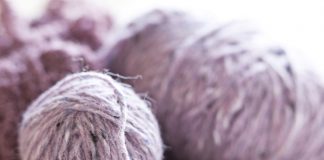 |
|
| Issue #81 • May/June, 2003 |
Historically, smallpox has been the most deadly of all diseases for humans, killing between 300 and 500 million in the last century alone, far more than the 111 million people killed in all that century’s wars combined. It is easily spread, kills 30% of those infected, and terribly scars and sometimes blinds those who survive. It was declared eradicated from Earth in 1980, but the Soviet Union has acknowledged maintaining a secret biological weapons program since then that employed 60,000 technicians and scientists. One fear is that some of the smallpox the Soviets worked with has gotten into terrorist hands, or that unemployed Soviet scientists desperate for money have been hired by Iraq, Al Qaida, or other terrorists.
June 22-23, 2001, nearly three months before the attack that toppled New York’s World Trade towers, the United States conducted a major simulation of a terrorist smallpox attack against three American cities. It was named Dark Winter, and it lived up to its name. Within seven weeks, one million Americans were dead and the disease had spread to 25 states and 13 foreign countries. In the face of the out of control epidemic, panic had spread across America, interrupting vital services such as food deliveries to supermarkets, and our Government considered the possibility of a nuclear response, although against whom it was not clear.
Following is a reenactment of that exercise, edited for brevity but containing all the essential elements. The exercise took place at Andrews Air Force Base in Maryland, and was attended by many senior level government officials. Participating institutions included the Johns Hopkins Center for Civilian Biodefense Strategies, the Center for Strategic and International Studies, the Oklahoma National Memorial Institute for the Prevention of Terrorism, and the Analytic Services Institute for Homeland Security.
Former U.S. Senator Sam Nunn of Georgia played the President of the United States, Governor Frank Keating of Oklahoma played himself, five senior journalists who worked for major news organizations participated in mock news briefings, and a number of other participants played various key government positions ranging from the Director of Central Intelligence to key Government health advisors. Fifty people connected with U.S. bioterrorism policy preparedness observed the exercise.
The goal of the exercise was to increase awareness among Government officials of the danger of such an attack, and to examine the decision challenges the highest levels of Government would face if confronted with a biological attack. The ultimate aim was to improve strategies of response.
Smallpox was chosen as the disease because historically it has been the most feared and deadly of diseases, and one of the more likely choices for terrorists. It is not only easily spread from one person to another, but there is no effective medical treatment. It may also be unstoppable in an unvaccinated population, and since the United States’ mandatory vaccination program was stopped in 1972, the U.S. population is very susceptible to smallpox. Even that part of the population that was vaccinated as late as 1972 may have little or no protection against the disease.
Although smallpox was declared eradicated in 1980, two official repositories of the variola virus were kept: one at the Centers for Disease Control and Prevention in Atlanta, and the other at the Russian State Research Center for Virology and Biotechnology in Koltsovo, Novosibirsk in central Siberia. Those supplies were to be used for scientific research and vaccine development, but it is now known that both countries maintained secret biological weapons programs since 1980. By 1990 the Soviet Union had a facility capable of producing 80 to 100 tons of smallpox a year, and it typically warehoused 20 tons. Although Russia and the United States have since abandoned their biological weapons programs, other countries still have them. It is thought that several rogue states like North Korea and Iraq and possibly terrorists have obtained samples of the smallpox virus.
|
Although the exercise took only two days, it simulated a time span of two weeks occurring between December 9-22, 2002. The exercise involved three National Security Council (NSC) meetings taking place on Dec. 9, 15, and 22, with the participants being made aware of evolving details of the attack and being required to establish strategies and make policy decisions to deal with it.
Exercise controllers acted as special assistants and deputies, providing facts and suggesting policy options to deal with the smallpox outbreak. Simulated newspaper coverage and TV video clips of the ensuing epidemic were also shown to participants, and various simulated memoranda, intelligence updates, and top level assessments of the spread of the epidemic were provided to key players whose jobs would normally require such information.
Each of the three NSC meetings began with controllers giving the NSC players briefings on the progress of the attack, an assessment of who the perpetrators might be, the response of the public, the comments of foreign governments, and any other information they would normally receive in such an emergency.
Assumptions
Several assumptions were made for this exercise, based on historical evidence and a variety of data related to susceptibility to smallpox:
- Assumption 1: It was assumed that the initial attack was from “weaponized smallpox,” similar to what the former Soviet Union would have developed in its secret bioweapons program.
This would be a far more efficient way of attacking the U.S. than with, say, infected jihad volunteers walking among the U.S. population. Weaponized smallpox can be aerosolized and dispersed in a variety of ways, such as attaching an aerosol device filled with weaponized smallpox, complete with a timer, to the wall of a shopping mall, airport, or ventilation system of an enclosed stadium, or attaching a spraying device to an unmanned drone (UAV) that has been programmed with global positioning (GPS) maps and flying it over a populated area.
- Assumption 2: The U.S. population’s “herd immunity” to smallpox was 20%, so that 228 million of its citizens were highly susceptible to infection.
This is a matter of debate. It is known that 42% of the population has never received a smallpox vaccination, and the remainder have declining immunity from vaccinations about 30 years ago. No one knows for sure, but epidemiologic data suggest that initial vaccination gives protection for 5 to 10 years, while revaccination gives even greater protection, possibly more than 10 years. Those who have been vaccinated twice, then, say as a child and while in the military, should have the greatest immunity.
- Assumption 3: The transmission rate of the disease was 10 to 1, that is, each infected person infected 10 others.
Although transmission rates have varied widely historically depending on susceptibility of a population, the strain of disease, and various social, demographic, political, and economic factors, the simulation designers considered a 10 to 1 transmission rate a conservative estimate. The U.S. population, they pointed out, is highly susceptible because vaccinations stopped in this country 30 years ago. Also, we are a highly mobile society. By the time the first victims are diagnosed with smallpox (9-17 day incubation period), the disease will have already begun spreading to a second generation of victims. Some of the initial victims and the second generation of victims will have travelled to other cities by that time. Since few American doctors have ever seen a case of smallpox, and since the initial symptoms resemble flu, diagnosis is liable to be slow.
For this simulation, the 10 to 1 estimate was based on 34 smallpox outbreaks in the past involving cases of smallpox being accidentally imported into a country that no longer had endemic smallpox. Twenty four of the outbreaks occurred in winter, which is the time when smallpox spreads most readily and which is the time within which the simulated attack occurs. Of these 24, 6 outbreaks most closed paralleled the conditions of the Dark Winter exercise, and they were used to make the 10 to 1 estimate. The number of second generation cases in those 6 outbreaks ranged from 10 to 19.
One reason the 10 to 1 estimate is thought to be on the conservative side is because of the 1972 outbreak in Yugoslavia, which encompassed many of the aspects one finds today in American society, namely, a great number of susceptible people and a wide geographic dispersion of cases. In that outbreak a man on a religious pilgrimage to Mecca and Medina was infected with smallpox while in Iraq, then brought it back to Yugoslavia. His infection was not diagnosed, nor were the 11 people he infected suspected of having smallpox. Not until 140 new cases developed was the epidemic recognized as smallpox. Some 35 people died from this single initial infection.
- Assumption 4: The U.S. Centers for Disease Control and Prevention (CDC) had 12 million doses of vaccine available at the time of the exercise.
The CDC actually had 15.4 million doses, but practical experience from the 1960s and 70s smallpox eradication programs showed that it was common to lose 20% of a vial’s vaccine due to inefficiencies and waste.
- Assumption 5: In the initial attack at three shopping malls in Oklahoma City, Philadelphia, and Atlanta, 3,000 people were infected.
This is considered a plausible scenario scientifically since it would take only 30 grams of weaponized smallpox to infect 3,000 people via an aerosol attack.
The 1st NSC meeting, Dec. 9, 2002
The initial attack:
On December 9, 2002, during the first of three NSC meetings that will take place in this simulation, the 12 NSC members are told that a smallpox outbreak has occurred in the U.S. In Oklahoma, 12 cases of smallpox have been confirmed, with 14 more suspected. There are also suspected cases of smallpox in Georgia and Pennsylvania.
The governor of Oklahoma, Frank Keating, who is in town to make a speech, attends the meeting. NSC members are briefed on the disease, its lethality, its contagion, and the availability of smallpox vaccine.
All this takes place against a backdrop of the following geopolitical situation:
- Iraq is again threatening to invade Kuwait, and leaders of Kuwait, the United Arab Emirates, and Bahrain have requested the U.S., Britain, and France deploy troops to the region. The NSC meeting has been called to consider deploying forces.
- Since sanctions against Iraq had been lifted six months prior, it has been discovered that Saddam Hussein is aggressively pursuing a bioweapons program.
- Several top scientists from the former Soviet secret bioweapons program are believed to have been working in Iraq and Iran for the past year.
- An Al Qaida terrorist was recently caught trying to buy plutonium and biological pathogens from Russia.
President Nunn informs the NSC members that the agenda of the meeting has changed, that the U.S. has been subjected to a suspected smallpox attack, and that it could be related to their anticipated decision to deploy troops to the Mideast. No one has yet taken credit for the attack.
He introduces Governor Keating, who says hospital emergency rooms in Oklahoma City hospitals are very crowded and that many in the hospital staff have failed to show up for work, fearing a smallpox infection they might bring home to their families. The media is broadcasting nonstop news about the smallpox outbreak, and the Governor is already considering calling out the National Guard if fear continues to grow among the populace. He has already declared a state of emergency and requests the President do the same. He goes before the news cameras in a few hours, he says, and he’d like to be able to tell the people of Oklahoma that all 3.5 million of them will get the smallpox vaccine within 72 hours.
The NSC is then briefed on smallpox, using various slides of actual smallpox cases and statistics relating to the progression, spread, and lethality of the disease: U.S. doctors have no experience with smallpox and there is no rapid diagnosis or treatment. Isolation or vaccination are the only defenses. Only 12 million doses of vaccine are available, and a CDC contract for an additional 40 million doses will not be filled until 2004. The worldwide supply of vaccine is 60 million doses, but some of it is believed worthless due to inadequate storage by some countries.
The NSC members are told that the CDC has sent 100,000 doses of smallpox vaccine to Oklahoma, with vaccinations restricted to infected people, their close contacts, and investigators.
Council members are also told that the attack most likely occurred about Dec. 1, due to at least a 7-day incubation period for the disease. The second generation of cases, then, would be about Dec. 20, 11 days away. Urgent action is needed to halt the spread of the disease, but a modern, urban, mobile population, coupled with a limited supply of vaccine, does not offer encouraging prospects for controlling the outbreak.
The FBI tells the Council they will have 200 agents vaccinated and sent to Oklahoma within 24 hours, but they have no leads as yet. Several possible culprits are named: Iraq, Iran, North Korea, China, Russia all have the capability. But anyone who has obtained samples of smallpox, possibly from an unemployed Soviet scientist, could grow smallpox and launch an attack.
Council members consider their options. The CDC and local authorities would already be isolating victims and their closest contacts. Should public gatherings be curtailed and schools closed? How should the available vaccine be distributed? Should the National Guard be activated, and should it be under state or federal control? Should there be mandatory or voluntary vaccinations? What should the public be told? What should be done about the deployment of troops to the Mideast?
They agree to inform the public quickly and completely to ensure cooperation with disease control measures. They decide to use the “ring method” of vaccination, which worked so successfully in eradicating the disease in the 1960s and 70s. With the ring method, all first contacts with the victim are vaccinated, then a second ring of secondary contacts are vaccinated. The NSC decides the ring method should also be used in other states, should the virus break out there. For strategic purposes they reserve 1 million doses of vaccine for Department of Defense (DOD) needs, and instruct the DOD to determine its priorities. They also decide to deploy an additional aircraft carrier battle group to the Persian Gulf to join the one already there.
The final action of the NSC is to prepare a presidential statement for the news media, which the President delivers to a nationwide audience from the press room.
The 2nd NSC meeting, Dec. 15, 2002
The outbreak spreads:
The second NSC meeting opens with a review of the following news video clips:
- 300 people are dead and 2000 are infected in 15 states. Hospitals are overwhelmed as tens of thousand of sick or fearful people seek medical help. Many hospital employees are not showing up for work.
- The epidemic has spread to Canada, Mexico, and the United Kingdom, with Canada and Mexico asking the U.S. for vaccine.
- Violence has broken out in some areas, with riots around a vaccination site in Philadelphia leaving two dead. Police and the National Guard are trying to control the crowds.
- Many countries have closed their borders to people travelling from the U.S. unless they can show proof of recent smallpox vaccination.
- Governor Keating is considering closing all stores to try and halt the spread of the disease. Malls across the country are already virtually deserted. The Governor has closed all schools and universities and cancelled all sporting events.
- The federal government is being widely criticized from all quarters for failure to have an adequate smallpox vaccine on hand. The lone pharmaceutical company capable of making smallpox vaccine says that at most it can produce 4 million doses per month, even if all FDA regulations are waived. Russia has offered to provide 4 million doses of vaccine.
- Panic buying is beginning to occur in some cities as food deliveries are slowed by the reluctance of truckers to go into areas with smallpox. There are sporadic reports of people of Arab appearance being assaulted on the street.
A memo is given to the Attorney General. It clarifies the Stafford Act, the Posse Comitatus Act, the Federal Quarantine Law, the Insurrection Act, and Martial Law, all laws designed to invoke federal authority in a national emergency. Among other things, the laws would allow the President to declare a national emergency and use military troops to quell civil disturbances, authorize the forced inoculation and isolation of people who could spread a communicable disease, restrict travel, dispose of bodies in ways contrary to personal beliefs, suspend habeas corpus (that is, arrest without due process), and curtail other liberties as needed.
Another memo to the FBI Director and Attorney General states there is a high probability that the attack came from another state or a state-sponsored terrorist group, and that an initial analysis of the smallpox used indicates it came from Soviet Union stocks or North Korea. The memo notes that as little as two years ago North Korean Special Forces were still receiving smallpox vaccine.
The President is handed a memo suggesting it may be problematic going forward with a war in the Persian Gulf, given the severity of the domestic crisis. He addresses the council members, announcing that the Secretary of State is ill and hospitalized. He says the lack of vaccine and the tactics of some states to stop the epidemic has led to serious economic disruption and civil unrest in some areas.
The Chair of the Deputies Committee, Dr. Tara O’Toole, outlines the progress of the epidemic and says all cases appear related to three initial attacks in Oklahoma, Georgia, and Pennsylvania. Vaccine, unfortunately, is running out amid growing political pressure to vaccinate more broadly. One million doses of vaccine are still being held for military personnel facing the potential war in the Persian Gulf. With all the vaccine that has been distributed, 1.25 million doses remain.
Dr. O’Toole further states that there is growing public demand for the forcible relocation of infected people to isolated facilities. She says contacts of infected people are not complying sufficiently with voluntary home isolation. There is also dangerous misinformation in some media about good vaccine and bad vaccine, advice to flee cities, claims that poor neighborhoods are being denied vaccine, and hate speech directed at certain ethnic groups.
|
The FEMA Director delivers his remarks: Health care facilities have become nonfunctional in some communities due to overcrowding and workers staying away from their jobs. At least 20 hospitals have closed their doors in Oklahoma. In many states National Guard troops are providing security at hospitals, even delivering food and critical supplies. Many states have prohibited public gatherings, stopped transportation, and closed airports.
Once again the NSC considers its options. Members decide to leave the National Guard, as well as quarantine and isolation issues, in the hands of the states. They will accept the vaccine from Russia, and proceed with a crash program to manufacture vaccine even though liability issues have not been resolved. They opt for mandatory isolation of all smallpox victims in dedicated facilities. They will encourage voluntary isolation of contacts using National Guard and Defense Department resources to supply food. Federal travel restrictions will be established, and penalties will be imposed for the promulgation of dangerous information.
An intelligence memo is given to NSC members: It indicates that a new exclusionary zone has been established by Iraq around a suspected bioresearch facility near Samarra. Activity at the facility appears normal but villages for a 10-mile radius around it appear to have been abandoned.
In a memo delivered to the Attorney General, there are reports of increasing incidents of violence, mainly against people with dark skin or who appear Arab-American. Two mosques have been defaced and one burned in the last 24 hours. In downtown Chicago, three dark skinned youths were shot dead, apparently because they looked Middle Eastern. The ACLU has sued Pennsylvania over the issues of mandatory vaccination and curtailment of transportation.
The NSC watches a newsclip in which the Governor of Texas announces the suspension of all travel between Texas and Oklahoma. He urges other governors to do the same, and he strongly criticizes the federal government for being “unable or unwilling to prevent the spread of the smallpox virus.”
President Nunn addresses the nation on national TV. He relates the gravity of the crisis and appeals for Americans to remain calm and work together to defeat the virus, and to heed the advice of their elected leaders and health officials.
The 3rd NSC meeting, Dec. 22, 2002
A crisis out of control:
The third and final NSC meeting opens with a review of news video clips:
- The number of smallpox cases has reached 16,000, with 1,000 people now dead. The epidemic has spread to 25 states and 10 other countries. Although investigation suggests all cases are related to the initial attack in three states, the evidence does not rule out additional or ongoing attacks.
- The U.S. is suffering severe economic damage. In Atlanta and Philadelphia, most businesses are closed and massive traffic jams are occurring across the state as people try to flee the disease.
- A New York Times poll indicates that most Americans think that the state and federal governments have lost control of the epidemic. A CNN/Gallup poll says nearly half of Americans think the President should use nuclear weapons against any nation proven responsible for the smallpox attack.
- Violence is spreading across the nation as individuals try to keep others suspected of having smallpox at a distance. In New York, two police officers and three family members were killed when the police tried to escort two family members with smallpox to an isolation area.
Then Dr. O’Toole once again outlines the progress of the epidemic for the NSC:
- In the past 48 hours there have been 14,000 new cases. Of the 1,000 dead, 200 have been from reactions to vaccination. It is estimated that 5,000 more will die within the next two weeks.
- The vaccine has now been depleted, and the U.S. can produce only 12 million unlicensed doses a month, beginning in four weeks.
- A major impact on the U.S. economy continues and there are shortages of many types of food across the nation. People are fleeing cities after the announcement of new smallpox cases.
The NSC asks for a worst case scenario. It is stark:
- By the end of the second generation of smallpox cases (about Jan. 3), 30,000 will be infected and 10,000 dead.
- By the end of Generation 3 (Jan. 20), 300,000 will be infected and 100,000 dead.
- By the end of Generation 4 (Feb. 6, which is 7 weeks after the start of the epidemic), 3 million will be infected and 1 million dead.
A memo is given to the Secretary of State:
- Russia, France, and Nigeria are demanding the U.S. share any vaccine it has to help fight the overseas spread of the epidemic.
- Cuba has offered to sell smallpox vaccine to the U.S. Cuba claims it has the know-how to produce the vaccine quickly.
Another memo is handed to the Director of the FBI and the Director of Central Intelligence (DCI):
- A credible Iraqi defector claims Iraq is behind the smallpox attack. Iraq has previously denied involvement, but has also warned the U.S. that it will retaliate against any U.S. attack in “highly damaging ways.”
Finally, a printed message is handed to all members of the NSC. It states that the New York Times, Washington Post, and USA Today have received anonymous letters demanding the U.S. withdraw its forces from the Persian Gulf and Saudi Arabia. The letter claims responsibility for the smallpox attack and contains a generic fingerprint of the smallpox strain matching the fingerprint of the strain causing the current epidemic. Unless the U.S. forces withdraw in one week, it warns of renewed attacks using smallpox, anthrax, and plague.
The Dark Winter exercise ends with the NSC discussing how to respond. If the American people demand they use nuclear weapons, against who? Should they withdraw U.S. troops from the Persian Gulf? And finally, with no vaccine remaining and the epidemic out of control, how do they control the current spread of smallpox and any new attacks with disease?
The Dark Winter exercise was no trivial undertaking. It was carefully planned and orchestrated, primarily by the prestigious John Hopkins University in Baltimore, Maryland, to answer one question: Could America withstand an attack of human-inflicted disease. The answer was a resounding No! at least in the case of smallpox. We flunked the exercise on a catastrophic scale.
Three months after the exercise the U.S. was subjected to the September 11 attacks against the World Trade Centers in New York City and the subsequent anthrax mail attacks in Washington, D.C. Suddenly the attacks of terrorists were not just the stuff of “what if” simulations like Dark Winter. Our Government began working on defense strategies against such attacks, and it started evaluating its stocks of smallpox vaccine.
The vaccine situation is different today than it was in June of 2001 when the Dark Winter exercise took place. The U.S. has found more vaccine than we thought we had, and we have diluted other vaccine to make it stretch far enough to cover the American population. There are still questions about the effectiveness of this diluted vaccine after so many years in storage, but new vaccine to cover the entire population is being manufactured and will be ready in early 2004.
Risks associated with the vaccine are another serious consideration not discussed in the Dark Winter simulation. I’ve covered that in another article on page 28 of this issue.

















And now with Covid19, this scenario seems eerily similar to this exercise, hmmmm, most exercises result in actual live exercises.